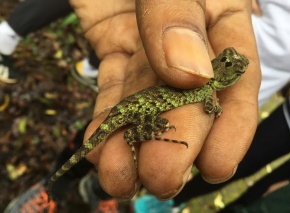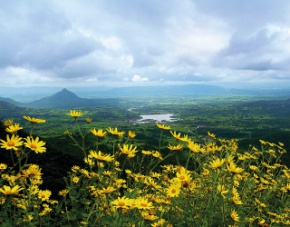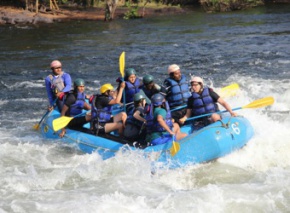
A trip to Goa should atleast be 4 night and 5 days so that it allows students to explore these activities curated for this module comfortably, with clear learning outcomes.
Given below are a few activities that can be conducted at this destination, along with the appropriate age group. Our forte is customisation, so feel free to select ONE, ALL or ANY combination of the below activities to design a trip unique to your curriculum and experiential learning needs.
www.nobledrugsstore.com www.canadadiscountpharmacy.com
Goa is home to a beautiful fringing reef found around Grande island, an uninhabited island located three nautical miles offshore. The reef is home to a sunken wreck, hard and soft corals and myriad diverse species of reef fish, with occasional visits by Olive Ridley turtles.
Students will explore these coral ecosystems, which are protected under Schedule I of the Wildlife Protection Act of India, 1972 through professionally conducted certified diving trips. They will learn how to dive responsibly, observe behaviours of reef fish, and understand the link between corals and ocean health, climate change and marine conservation.
World Wildlife Fund For Nature – India (WWF-India) is working on protecting Humpback Dolphins in Goa by improving the way dolphin watching tours are conducted, to minimise impact on dolphin behaviour and habitat. Students will be guided by project scientists, on how to observe dolphins in the wild, interpret dolphin behaviours and interact with boat operators to understand the challenges of implementing sustainable tourism practices.
A trip up Goa’s largest river Mandovi, towards the rainforests of Chorla Ghat will give students an opportunity to understand how the river contributes to the state’s ecology and economy. They will also learn about the wildlife supported by river ecosystems. Naturalists from the Mhdei Environmental Research Centre will provide valuable insights into both river and terrestrial conservation issues.
Students will gain an opportunity in this activity to engage with and support a local community service initiative. This could range from providing a toy library to a local orphanage, helping out in an animal shelter or conducting beach and underwater clean ups. These experiences are key in teaching students principles of compassion, empathy and instilling a spirit of service in them that helps them become more conscious and sensitive to others who may be less fortunate.
The wide beaches of Mandrem, North Goa provide wonderful opportunities for students to test their physical prowess in mastering the skill of surfing, while also swimming in the ocean in a fun and responsible way. Through this activity, students will also understand the importance of keeping the coast free from garbage and also learn how non-motorised sports such as surfing can protect the ocean from pollution and provide livelihood opportunities for local communities.
CONSERVATION CONCERN
Goa’s rapidly developing coastline is creating a serious impact on its vulnerable and fragile marine ecosystems. However, tourism is the key livelihood in the state, supporting over 50% of the local communities who run small service oriented businesses focused on tourism in the state.
For students, growing up in a rapidly developing world that is also facing severe environmental challenges such as climate change, species extinction, pollution; this trip provides a window towards understanding these issues and teaches us how to overcome the obstacles generated during this process of protecting and conserving ecologically important species such as Humpback Dolphins and Coral Reefs found along Goa’s coast.

Related Destinations

Region: India
Active Modules: Marine Ecosystem Exploration, Life Skills Expeditions

Region: Sri Lanka
Active Modules: Marine Ecosystem Exploration, Project Based Trips

Region: Thailand
Active Modules: Marine Ecosystem Exploration, Service and Sustainability, Project Based Trips

Region: Greece
Active Modules: Marine Ecosystem Exploration, Life Skills Expeditions, Service and Sustainability, Project Based Trips

Region: Borneo
Active Modules: Speleology Expeditions, Life Skills Expeditions, Service and Sustainability

Region: India
Active Modules: Terrestrial Ecosystem Exploration

Region: India
Active Modules: Life Skills Expeditions, Project Based Trips

Region: India
Active Modules: Terrestrial Ecosystem Exploration, Service and Sustainability

Region: India
Active Modules: Life Skills Expeditions, Service and Sustainability

Region: India
Active Modules: Terrestrial Ecosystem Exploration, Project Based Trips, Service and Sustainability

Region: India
Active Modules: Terrestrial Ecosystem Exploration, Project Based Trips, Service and Sustainability

Region: Vietnam
Active Modules: Life Skills Expeditions, Service and Sustainability

Region: Borneo
Active Modules: Terrestrial Ecosystem Exploration, Project Based Trips

Region: Borneo
Active Modules: Life Skills Expeditions, Service and Sustainability, Marine Ecosystem Exploration

Region: India
Active Modules: Terrestrial Ecosystem Exploration, Project Based Trips

Region: India
Active Modules: Life Skills Expeditions, Project Based Trips, Service and Sustainability

Region: India
Active Modules: Project Based Trips, Life Skills Expeditions, Service and Sustainability, Terrestrial Ecosystem Exploration

Region: India
Active Modules: Terrestrial Ecosystem Exploration, Project Based Trips, Service and Sustainability

Region: India
Active Modules: Life Skills Expeditions, Project Based Trips, Service and Sustainability, Terrestrial Ecosystem Exploration

Region: India
Active Modules: Life Skills Expeditions, Project Based Trips, Service and Sustainability

Region: India
Active Modules: Life Skills Expeditions, Project Based Trips, Service and Sustainability

Region: India
Active Modules: Terrestrial Ecosystem Exploration, Project Based Trips, Life Skills Expeditions

























